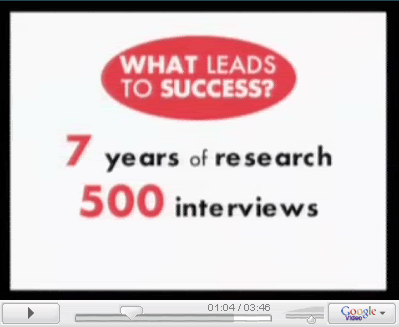If it weren't for ideas, we would still be living in caves. If it weren't for ideas, companies would not exist. If this is true, why do most companies do everything in their power to suppress the ideas of their people to the point of not announcing those ideas for fear of repercussions?
Companies are filled with brilliant people. However, these brilliant people are not only the ones who run the business; they are the ones who answer the phones, crunch the numbers and replace the light bulbs.
There are hundreds of brilliant ideas brewing in people's minds at your companies at any time during the day. What does your company do to help nurture them to grow into innovations?
What do you do to help nurture them?
Slap policies on them and processes to bog them down? Install a pecking order so someone else can take credit for the idea? Shun people who go against the grain and speak up about changes that could help the company?
Sit back and think of the last time you sat down with someone and listened to their idea. Not sat and thought of how you were going to tell them they were wrong, but listened!
I'll bet my dollar to your dime not very recently. We have come accustomed to seeing brilliant ideas of others as threats to ours, instead of combining them to make it one great innovation.
Ideas are like flowers;
given the right environment, they will bloom into beautiful things.
Stomp on them enough, and they will shrivel.
Don't water them, and they will die.
Don't let them have their own light, and they will wither.
There are three main barriers to allowing effective ideas to bloom at the workplace: People, Policies and Practices (The three P's).
Ask someone why they fail or succeed at what they do and one of the top answers will be "because of the people at work".
If most of your co-workers or agents are insulting, disrespectful or closed-minded, ideas cannot bloom in that environment. However, if fellow employees and agents are respectful, encouraging and open-minded, then ideas have no choice but to bloom by the hundreds.
This is true ten fold for bosses. You can have all the encouragement in the world from fellow employees and agents, but if your boss is "stomping" on your ideas all the time, they will never grow and soon enough stop coming.
Policies were invented by a crusty old Human Resources Executive who was jealous other people were enjoying their work and wanted to make everyone else miserable. Policies do have a purpose, but should not be used as a Management scapegoat, or "idea stomper".
When I say Management scapegoat, I am referring to the practice of someone coming up with an innovative idea, letting it bloom, and then all of sudden have someone higher up say, "That is against policy A-D12. No ideas may be implemented until approved by the 14 Department heads at the annual meeting".
A sure way to stomp out an idea is to beat it to a pulp with company bureaucracy.
Practices are life jackets for employees with a very low change tolerance. "We don't do that here" or "We've always done it that way" are two infamous practices that can be said very easily and have a drastic impact on another's idea process.
Change is all in how you present it to people.
If you walk up to someone or send them a memo saying, "This is changing as of tomorrow", then of course they are going to resist it. Instead, feed the idea bloom, nurture the process of presenting it in a way that people always understand: W.I.I.F.M. (What's In It For Me).
If your idea will make the workplace better, explain it to individuals in micro terms to individuals, just how it will better their jobs and them in larger terms. People naturally think of themselves first, why not address that area first?
If you get someone else to buy into your idea bloom, they will help it in it's growing process.
the best is yet to be!
On Your Team.
Jeffrey Stanton
Your Trusted Advisor For Life
One of the fastest ways to build a successful referral based business is by training. Now, with me, I like to invest significant time immersing myself in training, while some people prefer to take it in bite-size chunks. Whatever your preference is, now is the best time to contact me.
If you have found this tip useful, please share it with any friends, family, colleagues and associates who you think will be interested. Feel free to print it (with credit and subscription information) and continue to enjoy the tips. I am always grateful for any comments, criticisms or other feedback that you may have. Please send them to feedback@jeffreysjournal.com


































No comments:
Post a Comment